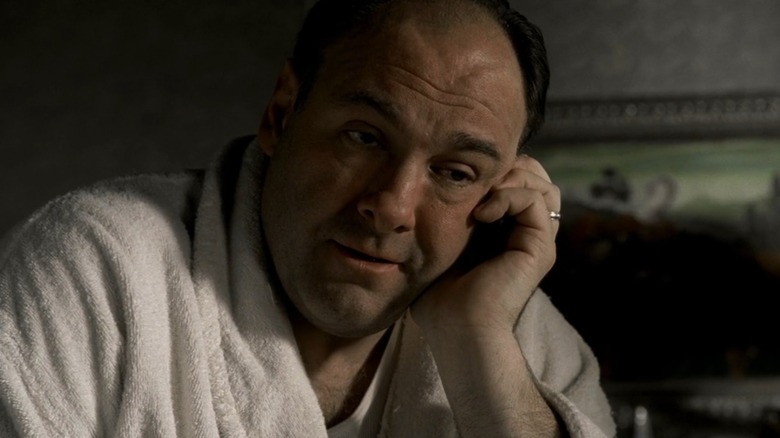Seventeen years after it first aired on HBO, the series finale of “The Sopranos” still stuns. David Chase’s polarizing but powerful decision to end one of the best TV shows of all time with a sudden, ambiguous cut to black remains bold and shocking, even as countless other small screen sagas have come and gone.
In the new HBO two-part documentary “Wise Guy: David Chase and the Sopranos,” the series creator, writers, executive producers, and an occasional director gets surprisingly candid about both the show’s inception and its ending. The rest of the cast and crew does too, with several involved in the finale recalling their initial disbelief at the show’s withholding ending. “It was so sudden and strange,” actor Michael Imperioli noted, while co-star Drea de Matteo said she called around to ask if her TV had gone out. According to star Lorraine Bracco, who played psychiatrist Dr. Melfi on the show, late Tony Soprano actor James Gandolfini was among the shocked.
“I was with Jim,” Bracco told interviewers, confirming that the star of the show wasn’t told about mobster Tony’s fate — or the lack of clarity surrounding it — beforehand. After finishing the episode, Bracco recalled, “Jim said, ‘That’s it? That’s it?’ He couldn’t believe it.” When asked about the tone of the actor’s exclamation — specifically if he was “pissed” — Bracco clarified that it wasn’t an angry response. Rather, she says, “I think he was in shock like everybody else.”
The Tony Soprano actor was in shock
Gandolfini was the first of many people who would be. On June 26, 2007, nearly 12 million people tuned in to see how Tony’s story ended, only to discover that Chase wasn’t going to tell them. Instead, he ended the series with a scene that was at once tense and mundane. In it, Tony meets up at a diner with wife Carmela (Edie Falco) and son A.J. (Robert Iler), with daughter Meadow (Jamie-Lynn Sigler) on the way to join them. The family isn’t on particularly high alert, though Tony looks at every person who comes through the door — after all, he’s got plenty of enemies, some of whom have been on the verge of taking him out all season. A man in a Members Only jacket who looks particularly suspicious goes to the bathroom, and two Black men — typically the demographic the show’s mobsters would hire for a frame job — step into the diner. All the while, “Don’t Stop Believin'” plays. Then the show cuts to black. The end.
It’s an ending that baffled longtime fans as well as the show’s cast, according to “Wise Guy.” Many viewers (de Matteo among them) famously believed that their TV sets had gone out at the time. De Matteo added: “I’m thinking to myself, ‘This is David. This is f—ing David. This is exactly how he wanted to end the show. He doesn’t want anyone to know what’s going on right now.'” The really surprising tidbit of information here is that Gandolfini seemingly wasn’t in on the secret before the scripts dropped, but given several on-set tensions described in the documentary (Gandolfini’s personal demons and continuous wish to quit the show, Chase’s depressing taskmaster attitude, problems with press leaks), it makes sense that everyone involved would be left in the dark for as long as possible.
David Chase also dropped some hints about how the cut to black came to be
The darkness persisted beyond the show’s conclusion. Chase refused to drop hints about his intentions with the finale for years, and fans eventually came to their own conclusions about what must have happened. Finally, in Matt Zoller Seitz and Alan Sepinwall’s 2019 book “The Sopranos Sessions,” Chase likened the ending to a “death scene.” He later told The Hollywood Reporter that he had planned to have Tony killed in a mob confrontation, but decided to change the ending to a diner setting.
In “Wise Guy,” Chase still attempts to keep some mystique around the scene, but also gives more insight into his thought process, citing inspiration drawn from both a Journey lyric (“the movie never ends/It goes on and on and on and on”) and a stray line, spoken seasons earlier, in which A.J. Soprano guesses that black symbolizes death. For once, A.J. was right: the cut to black was a symbol of death coming for Tony, as abruptly and without warning as it could come for anyone. It’s all starting to make sense nearly two decades after the fact, but it’s amusing to know that at the time, the twist ending was as much a shock for James Gandolfini as it was for the rest of us.









